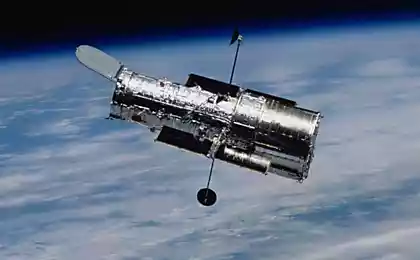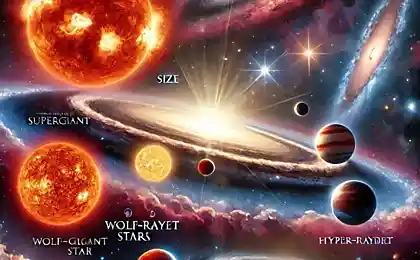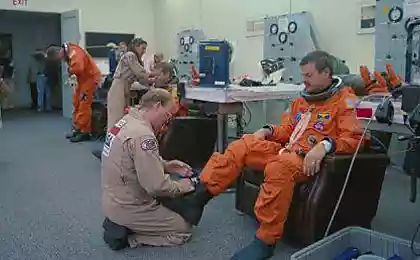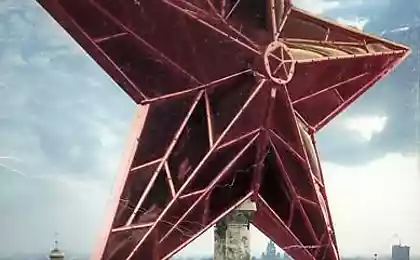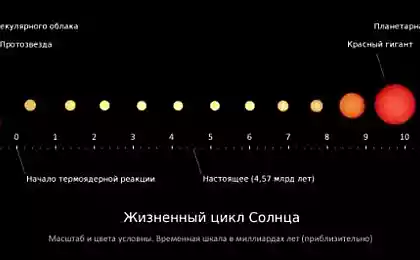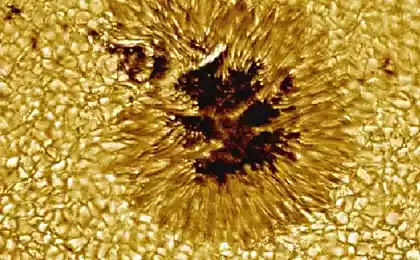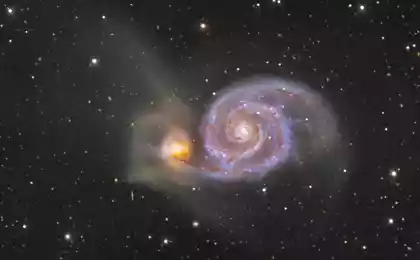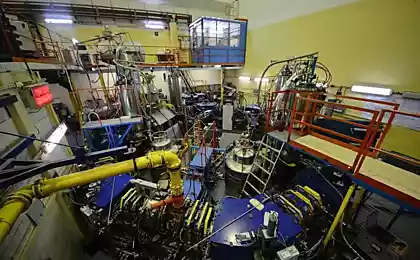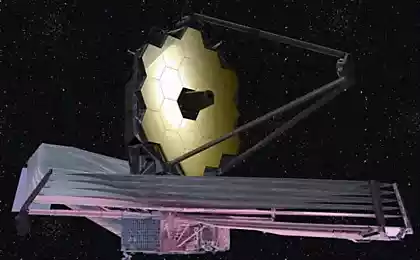535
"Hubble" saw a star "shooting" balls of plasma
Forty eight million three hundred two thousand six hundred fifty four
Our universe is amazing. A number of unusual objects in it defies counting. Astronomers on Earth constantly finding something new and interesting, sometimes notifying mere mortals. This time, scientists using the Hubble telescope saw the star, near which is periodically discharged huge balls of plasma with great speed 190 000 km/h. the Star cannon shoots every 8.5 years. This process continues for at least 400 years.
Plasma balls have become a mystery to astronomers because the source material cannot be disposed of the observed star, V Hydrae. This star is a dying red giant, which is located 1,200 light-years from Earth. The star has already lost half its mass, has a relatively low temperature of the upper layers and throw plasma balls the size of Mars can not. Astronomers have suggested that the source of the balloons is invisible from the Earth star, which is next to a red giant.
In modern astrophysics, the term red giants is, as a rule, such proevolutionsoccer the stars off the main sequence. Most likely, scientists say, plasma balls ejected by the star that is in an elliptical orbit near a red giant once in 8.5 years. Once the second star begins to pass through the outer layer, V Hydrae, she is collecting material dying neighbor. This material is collected in the form of a disk, and then serves as a launching pad for balls of plasma that are ejected with great speed.
This planetary system scientists can explain the origin of planetary nebulae, detected by the Hubble telescope of the large number of dying stars. It is now believed that planetary nebula is a celestial object consisting of ionized gas shell and the Central star, a white dwarf. Planetary nebulae are formed when resetting external layers (shells) of red giants and supergiants with a mass up to 1.4 solar at the final stage of their evolution. Planetary nebula expands at the end of life of its star.
"We knew that these objects can be high speed, but for the first time saw that kind of process alone," says one of the scientists of NASA. "We believe that these gaseous objects appear in the final stages of life of stars".
Observations conducted by researchers using the Hubble space telescope allow us to speak about the huge number of planetary nebulae. Also, scientists say that these nebulae are very different in structure and complexity. Often, the telescope recorded the emission of gases near the stars, but the release was unknown. Scientists assumed that the cause is the star that cannot be seen on the photos taken by Hubble. The astronomers can be considered fair because of the double stars in our galaxy, very much. To prove that the reason of the discharge plasma is a neighbor of the dying star wasn't easy.
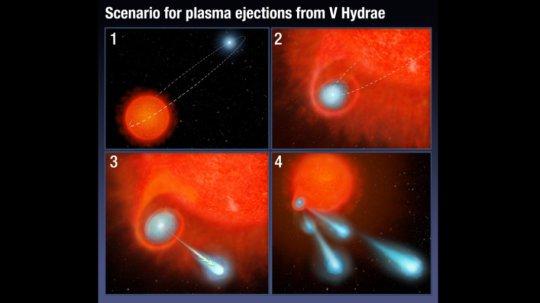
"We wanted to identify the process that caused the extraordinary transformation of the dying stars in a beautiful shimmering planetary nebula. These changes occur over a period of time in 200-1000 years, which by cosmic standards — just nothing," says Raghvendra Sahai (Raghvendra Sahai) from NASA.
Team Sahai used the tool Hubble's STIS (Space Telescope Imaging Spectrograph), holding with it the observation of V Hydrae for 11 years. The data showed scientists that in the observed region periodically appear huge, heated to very high temperatures plasma balls. The temperature is 10,000 degrees Celsius. As it turned out, for the first time these balls were observed by another team of scientists back in 1986. "Observations have shown that these balls are moving. For example, STIS have recorded only appeared plasma balls, balls that moved away from the star back a bit, and balls that are very far from the star, at a distance of more than 60 million kilometres.
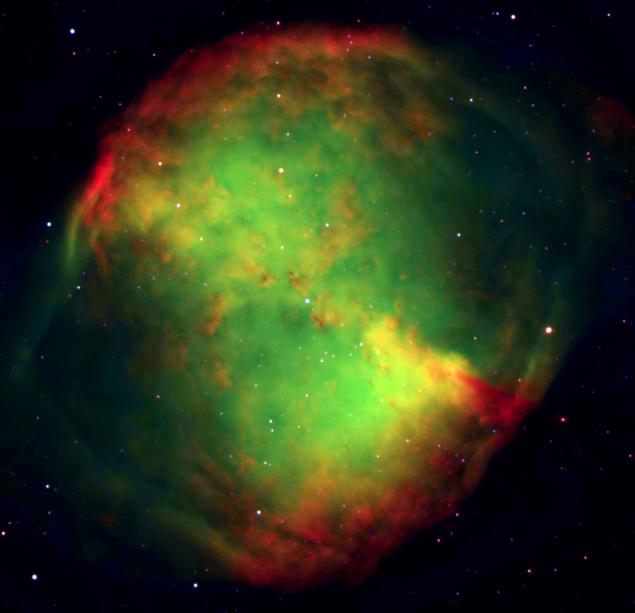
One of the planetary nebulae — nebula "Dumbbell"
Thanks to the data collected, scientists were able to build a model of the formation of these giant plasma objects. As mentioned above, this model includes the star V Hydrae and its invisible from the earth companion.
"This model is a fairly plausible explanation of what is happening. Besides, we already know what can be the reason for the formation of accretion disks. The disk structure arising from the fall of diffuse material that has a rotational moment on the massive Central body (accretion). Red giants such disks no, but often neighbouring stars with a smaller mass. Probably such stars, as in the case of V Hydrae are the "supplier" of emissions.
The surprise of the scientists in the observed case was the fact that the plasma is not emitted in a single direction. The direction is gradually changing. In almost 20 years of observations of V Hydrae, scientists have identified that sometimes the brightness of this star for a short time is greatly reduced. And it's like something passes in front of the stellar disk. Scientists now believe that it could be a plasma ball, one of those which was discussed above.
Now a team of astronomers are going to continue monitoring and to analyze the accumulated data.
Source: geektimes.ru/post/281272/
Our universe is amazing. A number of unusual objects in it defies counting. Astronomers on Earth constantly finding something new and interesting, sometimes notifying mere mortals. This time, scientists using the Hubble telescope saw the star, near which is periodically discharged huge balls of plasma with great speed 190 000 km/h. the Star cannon shoots every 8.5 years. This process continues for at least 400 years.
Plasma balls have become a mystery to astronomers because the source material cannot be disposed of the observed star, V Hydrae. This star is a dying red giant, which is located 1,200 light-years from Earth. The star has already lost half its mass, has a relatively low temperature of the upper layers and throw plasma balls the size of Mars can not. Astronomers have suggested that the source of the balloons is invisible from the Earth star, which is next to a red giant.
In modern astrophysics, the term red giants is, as a rule, such proevolutionsoccer the stars off the main sequence. Most likely, scientists say, plasma balls ejected by the star that is in an elliptical orbit near a red giant once in 8.5 years. Once the second star begins to pass through the outer layer, V Hydrae, she is collecting material dying neighbor. This material is collected in the form of a disk, and then serves as a launching pad for balls of plasma that are ejected with great speed.
This planetary system scientists can explain the origin of planetary nebulae, detected by the Hubble telescope of the large number of dying stars. It is now believed that planetary nebula is a celestial object consisting of ionized gas shell and the Central star, a white dwarf. Planetary nebulae are formed when resetting external layers (shells) of red giants and supergiants with a mass up to 1.4 solar at the final stage of their evolution. Planetary nebula expands at the end of life of its star.
"We knew that these objects can be high speed, but for the first time saw that kind of process alone," says one of the scientists of NASA. "We believe that these gaseous objects appear in the final stages of life of stars".
Observations conducted by researchers using the Hubble space telescope allow us to speak about the huge number of planetary nebulae. Also, scientists say that these nebulae are very different in structure and complexity. Often, the telescope recorded the emission of gases near the stars, but the release was unknown. Scientists assumed that the cause is the star that cannot be seen on the photos taken by Hubble. The astronomers can be considered fair because of the double stars in our galaxy, very much. To prove that the reason of the discharge plasma is a neighbor of the dying star wasn't easy.

"We wanted to identify the process that caused the extraordinary transformation of the dying stars in a beautiful shimmering planetary nebula. These changes occur over a period of time in 200-1000 years, which by cosmic standards — just nothing," says Raghvendra Sahai (Raghvendra Sahai) from NASA.
Team Sahai used the tool Hubble's STIS (Space Telescope Imaging Spectrograph), holding with it the observation of V Hydrae for 11 years. The data showed scientists that in the observed region periodically appear huge, heated to very high temperatures plasma balls. The temperature is 10,000 degrees Celsius. As it turned out, for the first time these balls were observed by another team of scientists back in 1986. "Observations have shown that these balls are moving. For example, STIS have recorded only appeared plasma balls, balls that moved away from the star back a bit, and balls that are very far from the star, at a distance of more than 60 million kilometres.

One of the planetary nebulae — nebula "Dumbbell"
Thanks to the data collected, scientists were able to build a model of the formation of these giant plasma objects. As mentioned above, this model includes the star V Hydrae and its invisible from the earth companion.
"This model is a fairly plausible explanation of what is happening. Besides, we already know what can be the reason for the formation of accretion disks. The disk structure arising from the fall of diffuse material that has a rotational moment on the massive Central body (accretion). Red giants such disks no, but often neighbouring stars with a smaller mass. Probably such stars, as in the case of V Hydrae are the "supplier" of emissions.
The surprise of the scientists in the observed case was the fact that the plasma is not emitted in a single direction. The direction is gradually changing. In almost 20 years of observations of V Hydrae, scientists have identified that sometimes the brightness of this star for a short time is greatly reduced. And it's like something passes in front of the stellar disk. Scientists now believe that it could be a plasma ball, one of those which was discussed above.
Now a team of astronomers are going to continue monitoring and to analyze the accumulated data.
Source: geektimes.ru/post/281272/
The world's first hydroponic solar farm: sea water + sunlight = tomatoes
Phrases of manipulators that you should not believe


